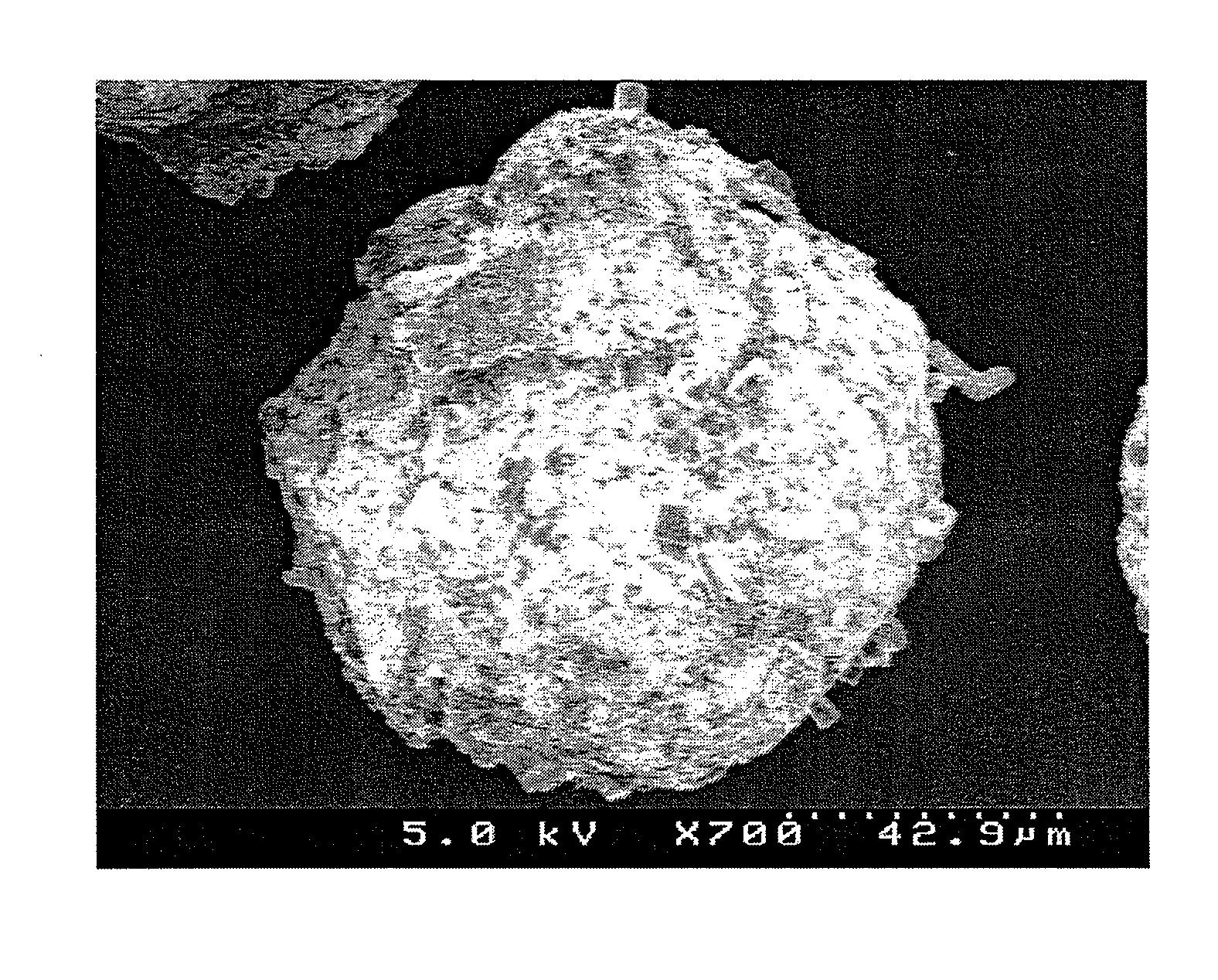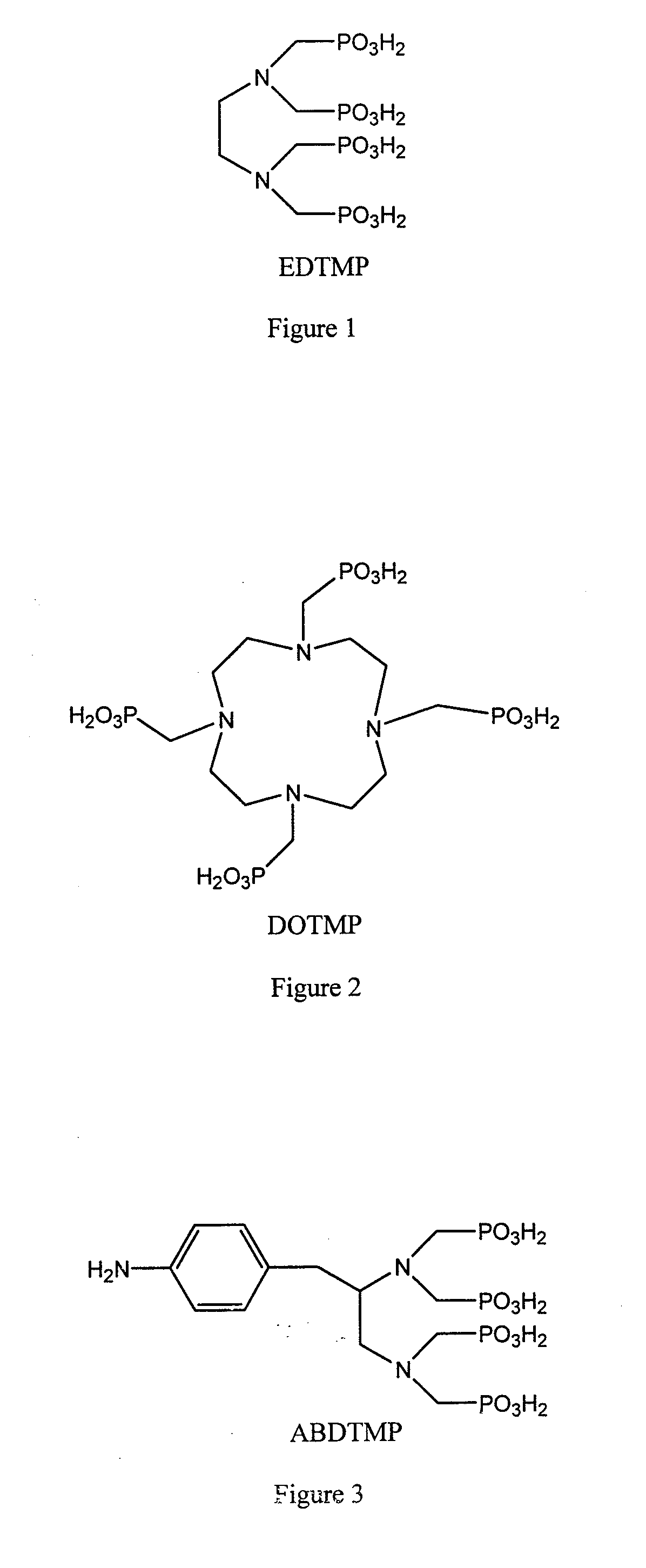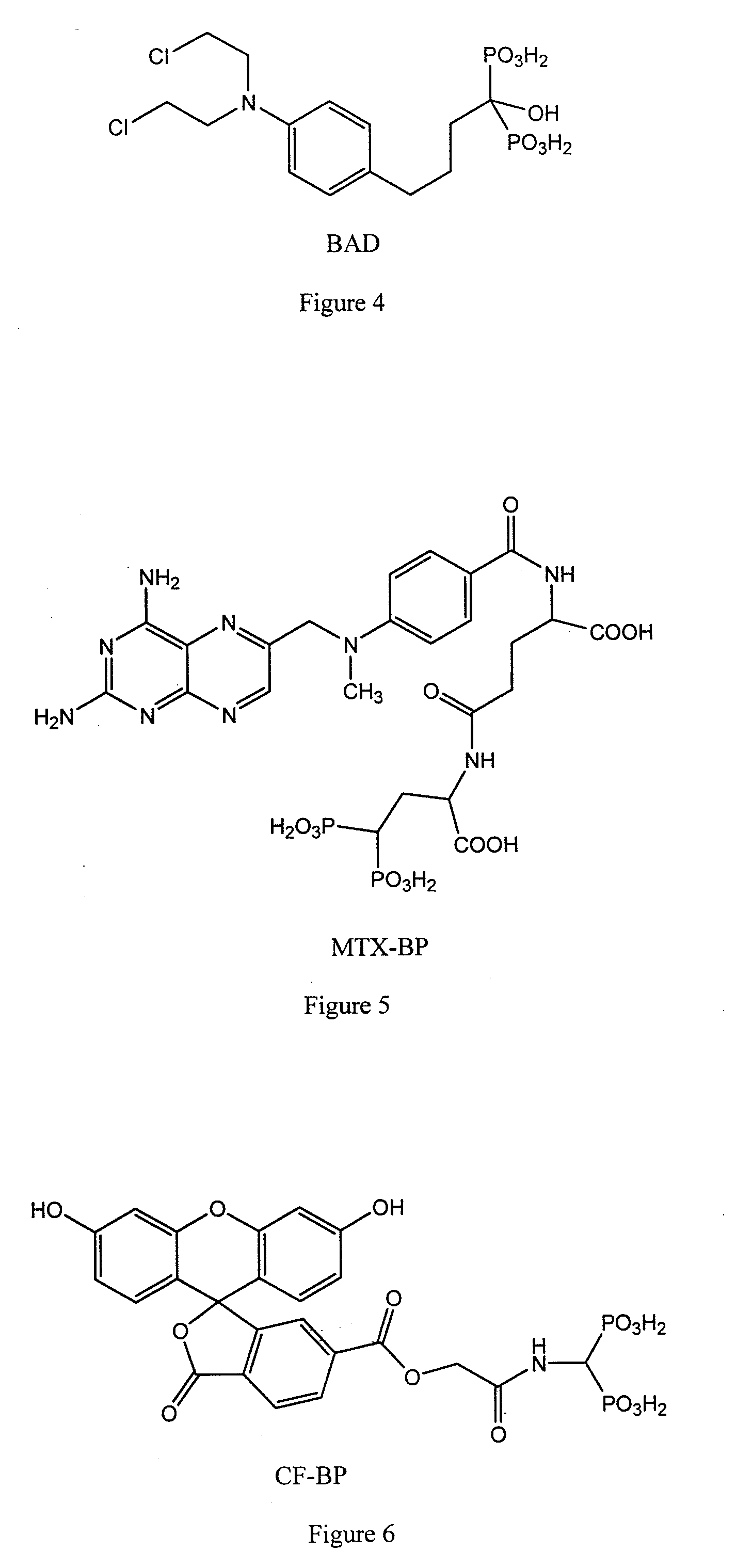Bone targeting of degradable drug filled nanoparticles
- Summary
- Abstract
- Description
- Claims
- Application Information
AI Technical Summary
Benefits of technology
Problems solved by technology
Method used
Image
Examples
example 1
[0102]This example illustrates a method of preparing pifithrin-α.
[0103]A small sample (J. Heterocyclic Chem., 34, 1763 (1997); and Andreani et al., J. Med. Chem., 38, 1090 (1995)). Referring to FIG. 14, the 2-aminothiazole (Q) was prepared by reacting chlorocyclohexanone (O), thiourea (P), N-bromosuccinimide, and benzoyl peroxide in toluene heated to reflux overnight. Then the solvent was removed, and the solid was recrystallized from hexane. This sample (Q) was then dissolved with a slight excess of commercially available p-methylphenacyl bromide (R) in toluene and then stirred for 48 hours at room temperature, at which time pifithrin-α precipitated out of solution as the HBr salt. Pifithrin-α.HBr was converted into the pifithrin-α free base by neutralization with 1M NaOH and subsequent extraction with chloroform.
example 2
[0104]This example illustrates a method for preparing pifithrin-β in one reaction.
[0105]A solution of 2-chlorocyclohexanone in toluene was treated with 1.1 equiv of thiourea and 1.1 equiv of triethylamine. The mixture was heated at 95° C. overnight. To this solution was added 1.3 equiv of 2-bromo-4′-methylacetophenone, and the mixture stirred overnight to produce a tan solid. The solid was filtered and washed with toluene. The solid was taken up in chloroform and 10% (wt / wt) potassium bicarbonate and stirred 5 minutes, resulting in dissolution of the solid. The layers were separated, the aqueous layer extracted with more chloroform, and the combined organic layers were washed with 5% (wt / wt) potassium carbonate. The organic solution was dried over sodium sulfate and the solvent removed to give a brown solid. The solid was subjected to silica gel column chromatography using 80 / 20 dichloromethane / methanol. Fractions were recovered containing pifithrin α and pifithrin β. These fraction...
example 3
[0106]This example illustrates a method for preparing a PEG-modified bone targeting agent.
[0107]A solution of 500 mg 4-[(N-Boc)aminomethyl]aniline (S in FIG. 15) in 10 mL dioxane was treated with paraformaldehye (400 mol %, 270 mg) and trimethylphosphite (400 mol %, 1.12 g). The mixture was heated to 95° C. overnight. More paraformaldehyde (270 mg) and trimethylphosphite (1.12 g) were added and the mixture was heated at 95° C. overnight again. The solution was cooled, taken up in chloroform (20 mL) and washed with saturated sodium chloride (20 mL) and water (20 mL). The organics were dried over sodium sulfate and the solvent and excess trimethylphosphite removed via rotary evaporation at 80° C. to provide 1.723 g of a clear oil. The presence of the diphosphonate (T) was confirmed by electrospray HPLC-MS showing a retention time of tR=2.9 minutes and a mass of 467 m / z [M+H]+ and 489 m / z [M+Na]+ found for the desired mass [M=C18H32N2O8P2].
[0108]A solution of 870 mg diphosphate (T) in ...
PUM
| Property | Measurement | Unit |
|---|---|---|
| Fraction | aaaaa | aaaaa |
| Fraction | aaaaa | aaaaa |
| Fraction | aaaaa | aaaaa |
Abstract
Description
Claims
Application Information
 Login to View More
Login to View More - R&D
- Intellectual Property
- Life Sciences
- Materials
- Tech Scout
- Unparalleled Data Quality
- Higher Quality Content
- 60% Fewer Hallucinations
Browse by: Latest US Patents, China's latest patents, Technical Efficacy Thesaurus, Application Domain, Technology Topic, Popular Technical Reports.
© 2025 PatSnap. All rights reserved.Legal|Privacy policy|Modern Slavery Act Transparency Statement|Sitemap|About US| Contact US: help@patsnap.com



